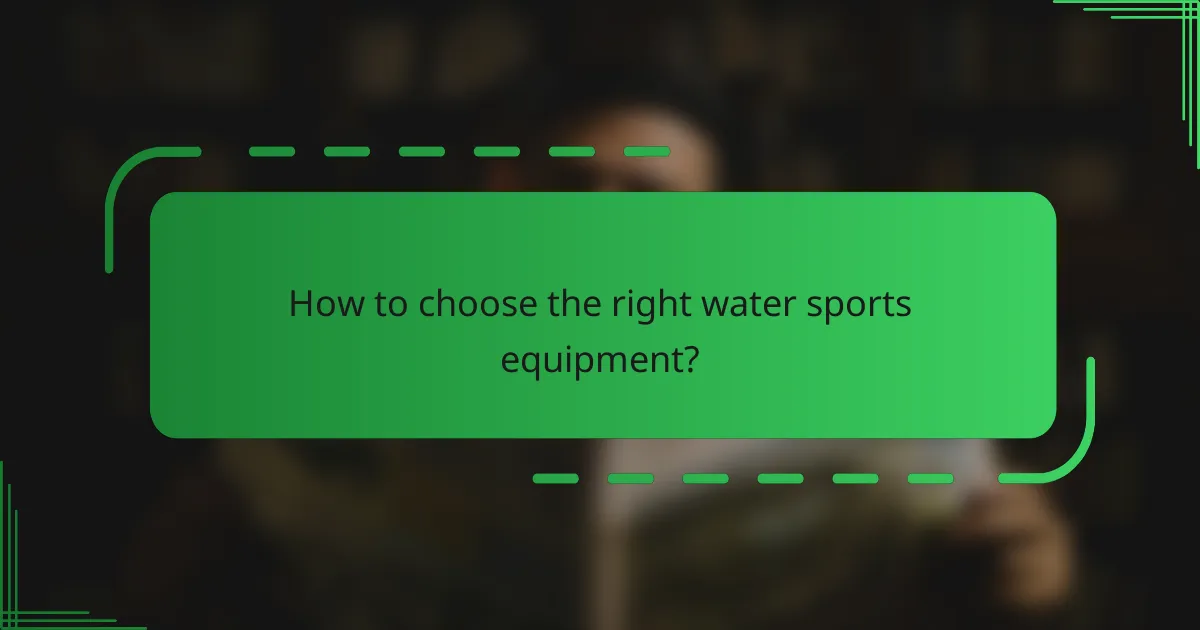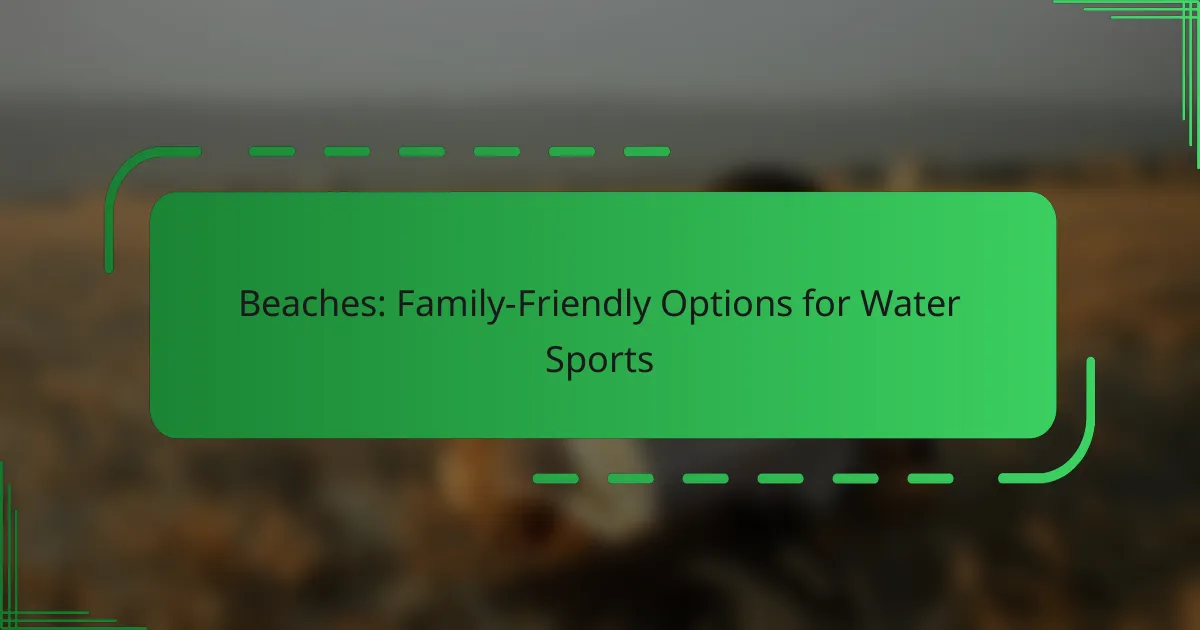This summer, dive into the excitement of water sports like jet skiing, wakeboarding, kite surfing, stand-up paddleboarding, and snorkeling. Each activity promises a unique thrill, perfect for both adventure seekers and water lovers. With a variety of stunning locations across the US, there’s something for everyone, regardless of skill level. Make sure to choose the right equipment to enhance your experience and ensure safety while having fun on the water.

What are the best water sports to try this summer?
This summer, some of the best water sports to try include jet skiing, wakeboarding, kite surfing, stand-up paddleboarding, and snorkeling. Each offers unique thrills and experiences, making them perfect for adventure seekers and water enthusiasts alike.
Jet Skiing
Jet skiing is an exhilarating water sport that allows you to ride a small, powerful watercraft across the waves. It’s accessible for beginners, with many rental companies providing safety gear and brief instructions.
When jet skiing, always wear a life jacket and be aware of local regulations regarding speed limits and designated areas. Popular spots often charge hourly rates ranging from $50 to $100, depending on the location.
Wakeboarding
Wakeboarding combines elements of surfing, snowboarding, and skiing, where riders are towed behind a boat while standing on a board. It’s suitable for various skill levels, from beginners to advanced riders.
To get started, find a local wakeboarding school or rental service that offers lessons. Equipment rental typically costs between $30 and $60 per hour. Remember to practice falling safely and to always wear a life vest.
Kite Surfing
Kite surfing involves riding a board while being pulled by a large kite, providing an adrenaline rush as you glide over the water. It requires more skill and practice than some other water sports, making lessons highly recommended.
Look for kite surfing schools that offer beginner courses, often priced around $100 for a few hours. Be mindful of wind conditions and local regulations, as some beaches may have restrictions on kite surfing.
Stand-Up Paddleboarding
Stand-up paddleboarding (SUP) is a relaxing yet engaging water sport that involves standing on a large board and using a paddle to navigate. It’s perfect for all ages and skill levels, making it a great family activity.
Many beaches and lakes offer rentals for about $20 to $40 per hour. When paddleboarding, choose calm waters for a more enjoyable experience, and consider bringing sunscreen and hydration supplies.
Snorkeling
Snorkeling allows you to explore underwater life while floating on the surface with a mask and snorkel. It’s an excellent way to observe marine ecosystems without the need for extensive training.
Look for snorkeling spots with clear waters and abundant marine life, often found in tropical regions. Rental gear is usually available for $10 to $30, and it’s advisable to go with a buddy for safety. Always check local guidelines regarding marine conservation areas before diving in.

Where are the top locations for water sports in the US?
The top locations for water sports in the US offer diverse environments and activities, catering to various skill levels and preferences. From lakes to oceans, these destinations provide thrilling experiences for enthusiasts of all ages.
Lake Tahoe, California
Lake Tahoe is renowned for its stunning scenery and clear waters, making it a prime spot for water sports. Popular activities include wakeboarding, jet skiing, and paddleboarding, with numerous rental shops available along the shoreline.
When visiting, consider the peak summer months for the best weather, though early mornings or late afternoons can provide a quieter experience. Be mindful of local regulations regarding boat speeds and safety equipment.
Miami Beach, Florida
Miami Beach is a vibrant hub for water sports, featuring warm waters and a lively atmosphere. Activities such as parasailing, kite surfing, and snorkeling are widely available, with many operators offering guided experiences.
Summer temperatures can soar, so plan your outings during cooler parts of the day. Always check for weather conditions and potential rip currents before heading out to ensure a safe adventure.
Outer Banks, North Carolina
The Outer Banks is famous for its unique barrier islands and diverse water sports opportunities. Windsurfing, kayaking, and fishing are popular here, with the area’s shallow waters ideal for beginners.
Consider visiting in late spring or early fall for milder weather and fewer crowds. Be aware of local wildlife regulations, especially during nesting seasons for sea turtles and birds.
Hawaii
Hawaii is a paradise for water sports enthusiasts, offering everything from surfing to scuba diving in its warm, crystal-clear waters. Each island has its specialties; for example, Oahu is famous for big wave surfing, while Maui is known for windsurfing.
Plan your activities based on the island’s seasonal conditions, as some sports are best during specific times of the year. Always prioritize safety by using appropriate gear and following local guidelines for water activities.

How to choose the right water sports equipment?
Choosing the right water sports equipment is essential for both safety and enjoyment. Consider your skill level, safety features, and rental options to ensure you select gear that suits your needs.
Consider your skill level
Your skill level significantly influences the type of water sports equipment you should choose. Beginners may benefit from more stable and forgiving options, such as wider kayaks or inflatable paddleboards, while advanced users might prefer performance-oriented gear.
Assess your experience with specific activities. For instance, if you’re new to surfing, a longer, wider board can provide better balance and stability, making it easier to catch waves.
Evaluate safety features
Safety features are crucial when selecting water sports equipment. Look for items that include buoyancy aids, secure straps, and durable materials that can withstand rough conditions.
For example, life jackets should meet safety standards and fit snugly without restricting movement. Additionally, consider equipment with built-in safety features, like quick-release mechanisms for harnesses in kiteboarding.
Check for rental options
Before purchasing equipment, explore rental options available at local water sports centers. Renting can be a cost-effective way to try different gear without the commitment of buying.
Many rental shops offer a range of equipment, from jet skis to paddleboards, allowing you to test various styles and brands. This approach helps you make an informed decision before investing in your own gear.

What are the safety tips for water sports?
Safety is crucial when engaging in water sports to prevent accidents and ensure a fun experience. Key tips include wearing appropriate gear, staying hydrated, and being aware of weather conditions.
Wear a life jacket
Wearing a life jacket is essential for safety in any water sport. It provides buoyancy and can save lives in case of an unexpected fall or accident. Ensure that the life jacket fits properly and is approved by relevant safety standards.
Different water activities may require specific types of life jackets, such as those designed for kayaking or jet skiing. Always check the regulations for the sport you are participating in to ensure compliance.
Stay hydrated
Staying hydrated is vital during water sports, especially in hot weather. Dehydration can impair performance and increase the risk of heat-related illnesses. Aim to drink water regularly, even if you don’t feel thirsty.
Consider bringing a water bottle or hydration pack while participating in activities like paddleboarding or sailing. Avoid excessive consumption of caffeinated or alcoholic beverages, as they can contribute to dehydration.
Know the weather conditions
Understanding the weather conditions is crucial for safe water sports. Check forecasts for wind speed, temperature, and storm warnings before heading out. Sudden changes in weather can create dangerous situations.
Use reliable weather apps or websites to monitor conditions, and be prepared to adjust your plans if necessary. If conditions worsen, it’s better to postpone your activity than to risk safety.



